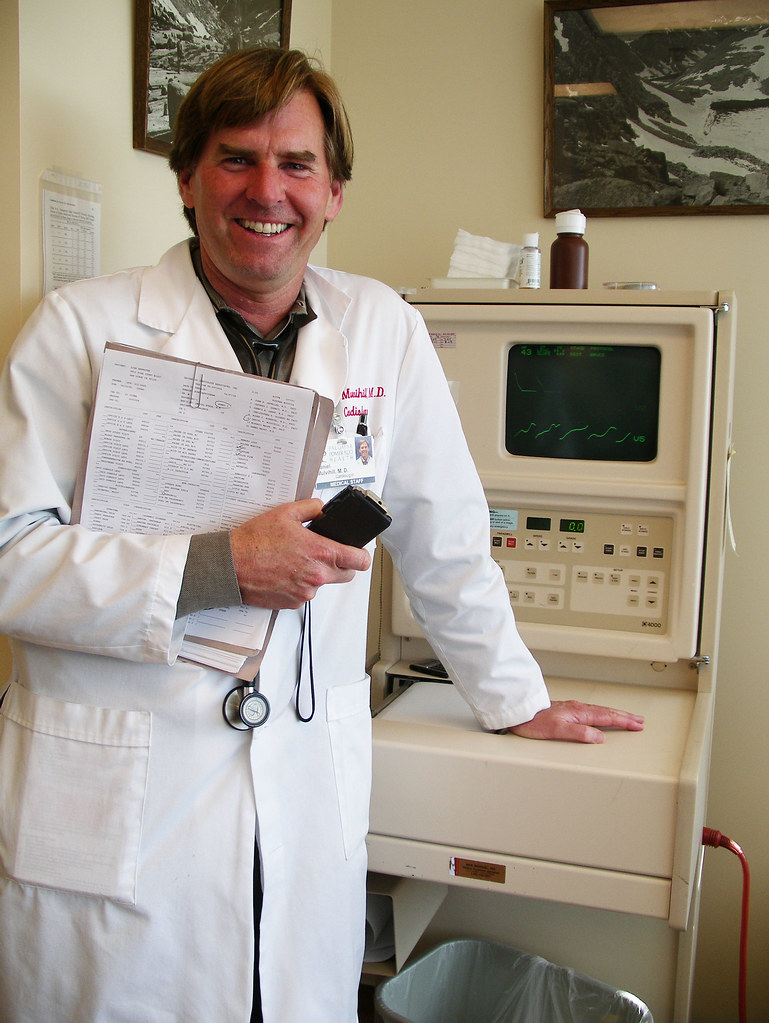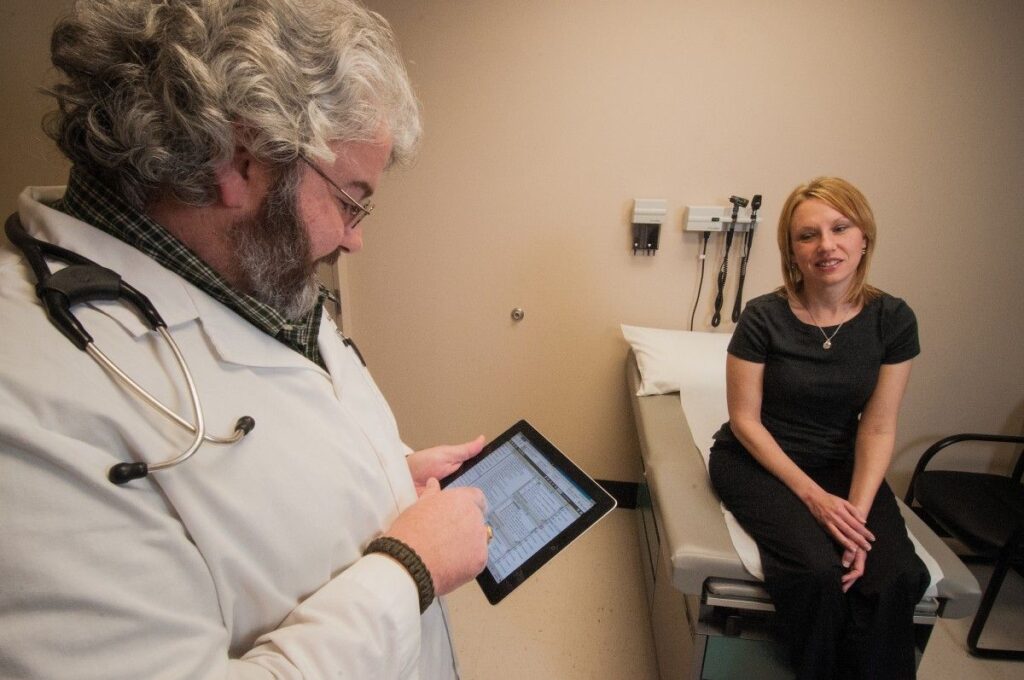
In our busy lives, it’s easy to overlook the importance of a routine physical exam, often waiting until symptoms arise before consulting a doctor. However, thinking of your primary care provider as a steadfast partner in your long-term health journey can shift this perspective entirely. Annual exams are not just appointments; they are crucial opportunities for preventive care, early detection, and establishing a baseline for your overall well-being, helping you address potential health issues long before they escalate into serious concerns.
These regular checkups are invaluable, providing a chance for both you and your doctor to reconnect and discuss any health issues that might be on your mind, no matter how minor they seem. As Dr. Neha Vyas, a family medicine physician, emphasizes, “You need a trusted primary care provider that you can talk to about your concerns — whether they are mental health needs or changes in your family history or any other health issues that come up.” This ongoing dialogue helps forge a strong, trusting relationship, which becomes particularly beneficial if and when something serious does occur.
Catching and treating diseases early is a cornerstone of better health outcomes. Many significant health threats, such as heart disease, diabetes, and lung disease, often manifest without clear symptoms in their initial stages, effectively hiding in plain sight. Regular physicals are specifically designed to uncover these silent dangers, enabling timely interventions that can literally save lives. By understanding the comprehensive checks your doctor performs, you can become a more informed and proactive participant in your own health management.

1. **The Foundational Importance of Regular Checkups: Your Proactive Health Partnership**Routine physical exams with your primary care provider are truly essential for detecting health issues early, managing chronic conditions, and ensuring your overall well-being. They aren’t just about addressing immediate concerns; they’re about establishing a personal health baseline, which makes it considerably easier for your healthcare team to identify subtle changes in your health over time. This proactive approach allows you to tackle potential risk factors before they develop into more serious conditions, providing you with tailored advice based on your unique age, lifestyle, and medical history.
These checkups offer a unique opportunity to forge a relationship with a healthcare professional who understands your health journey. Dr. Daniel Allan, another family medicine physician, highlights this, noting that “It’s a chance for the doctor to reconnect with their patient and for you, the patient, to reconnect with your physician.” This ongoing connection is vital, as it ensures you have someone who knows your history and can offer informed guidance when health questions or issues inevitably arise, even if you’re currently young and healthy.
Regular physicals also provide a designated time to bring up those nagging health questions or minor concerns that might not warrant a separate appointment. As Dr. Allan puts it, “It’s a chance to come in and bring up things that are bugging you — whether it’s a lingering health issue or something you read that you want your doctor’s opinion on.” This open dialogue is crucial for holistic health management, allowing for discussions on everything from odd moles to persistent aches that you’ve been meaning to get checked.
The primary care provider, whether a physician, physician assistant, or nurse practitioner, is specifically trained to spot and manage a wide array of health issues. This includes chronic diseases like heart disease, diabetes, and lung disease, which, as mentioned, are among the biggest global health threats and often present without early symptoms. Their expertise in early detection is precisely why regular physicals are so profoundly important in preventing severe health complications and ultimately saving lives.

2. **Vital Signs: The Body’s Basic Indicators and Early Warning System**Regardless of your age, certain vital signs are consistently assessed during every physical exam, providing immediate and crucial insights into your body’s current functioning. These fundamental measurements act as early warning systems, flagging potential issues that might otherwise go unnoticed. Blood pressure, heart rate, respiration rate, oxygen level, and temperature are the cornerstones of this assessment, giving your doctor a snapshot of your physiological state.
Monitoring blood pressure, for example, is critical because high blood pressure, often called the “silent killer,” can lead to serious heart problems if left unmanaged. Similarly, changes in heart rate can indicate underlying cardiovascular issues. These routine checks allow healthcare providers to establish a baseline for your normal vital signs, making it easier to detect any concerning deviations over time, prompting further investigation if necessary.
Beyond these internal metrics, your height and weight are consistently measured. These measurements are then used to calculate your Body Mass Index (BMI). A high BMI is closely associated with an increased risk of serious conditions such as cancer, heart disease, and stroke. Discussing these measurements with your doctor can lead to important conversations about lifestyle adjustments, helping you mitigate these risks proactively and maintain a healthier weight.
By diligently tracking these basic indicators, your doctor can identify trends that might signal the onset of chronic conditions or other health challenges. Even seemingly minor fluctuations can provide valuable clues that guide further diagnostic steps. This consistent monitoring through annual exams empowers you and your provider to intervene early, potentially preventing the progression of diseases that could have life-altering consequences.
Read more about: 13 Potential Early Warning Signs Your Body Might Show Before Dementia

3. **Comprehensive Blood Tests and Metabolic Screenings: Unveiling Hidden Risks**Routine blood tests are a powerful diagnostic tool within your annual physical, serving as a window into your internal health and often revealing conditions that have no outward symptoms. These tests are instrumental in screening for a range of metabolic issues and diseases that, if left undetected and untreated, can significantly impact your long-term health and well-being. Their role in early detection cannot be overstated.
Key among these are screenings for high cholesterol and blood sugar levels. Elevated cholesterol can contribute to heart disease, a leading cause of heart attacks and strokes. Likewise, monitoring blood sugar is crucial for identifying prediabetes and diabetes. Early intervention through lifestyle changes or medication can significantly alter the trajectory of these conditions, preventing severe complications such as nerve damage, kidney disease, and vision loss.
Regular blood tests also assess kidney function, which is vital for filtering waste products from your blood. Impaired kidney function, often silent in its early stages, can progress to serious kidney disease if not managed. By checking these parameters, doctors can detect early signs of strain on your kidneys, allowing for interventions that protect these essential organs.
These comprehensive screenings act as proactive health measures, giving you the knowledge needed to make informed decisions about your diet, exercise, and overall lifestyle. For example, if blood work reveals prediabetes, early interventions and lifestyle changes can prevent the condition from progressing to full-blown diabetes. This capability for early detection and intervention through blood tests is a prime example of how an annual physical can be truly life-saving.

4. **The Head-to-Toe Physical Examination: Observing Your Body’s Silent Signals**The physical examination segment of your annual checkup is a critical, hands-on assessment where your doctor uses their trained senses to identify signals your body might be sending, often without your conscious awareness. This head-to-toe evaluation goes beyond numbers and delves into the tangible aspects of your health, making it a profoundly important part of preventive care. It’s a comprehensive look designed to catch subtle irregularities that could be indicative of deeper health concerns.
During this thorough examination, your provider will perform several key actions. They will take your pulse, an immediate indicator of heart health, and listen carefully to your heart and lungs, searching for any unusual rhythms, murmurs, or respiratory sounds that might suggest underlying conditions. Checking your mouth and ears can reveal signs of infection or other issues, while feeling your lymph nodes helps detect inflammation or more serious conditions that affect the immune system.
Examining your skin is also a vital step, as it can uncover suspicious moles or lesions that require further investigation for skin cancer. Your doctor will also look for swelling in your extremities, which could be a sign of circulatory problems, heart failure, or kidney issues. These observations, combined with your medical history, provide a holistic view of your physical state, allowing for early detection of problems that might otherwise go unnoticed.
Furthermore, the exam is tailored to your individual needs and age. As Dr. Allan explains, “We tailor the exam to the patient.” For instance, for middle-aged or older patients, a doctor might listen to their carotid artery to check for stenosis, a buildup of plaque that can lead to stroke, which wouldn’t typically be done for a healthy young adult. This personalized approach ensures that the physical exam is as effective and relevant as possible, making it a cornerstone of life-saving preventive medicine.

5. **Mental and Emotional Health Screenings: Nurturing Your Inner Well-being**While physical symptoms often take center stage in healthcare discussions, your annual exam also serves as a crucial opportunity to assess your mental and emotional well-being. These screenings are becoming increasingly recognized as integral to overall health, helping to identify conditions like depression and anxiety that can profoundly impact your quality of life and even manifest in physical symptoms. Mental health is just as important as physical health, and your annual checkup is a safe space to address it.
Especially for teenagers, who are navigating significant physical, emotional, and social changes, annual exams include specific emotional and psychological health screenings for conditions such as depression, anxiety, and substance use. Providing a confidential environment, these discussions empower young adults to open up about challenges they might be facing, ensuring they receive the necessary support and resources during a formative period of their lives.
Routine mental health screenings aren’t limited to adolescence; they are integrated into adult checkups as well. Identifying conditions like depression and anxiety early on allows for timely intervention, whether through counseling, lifestyle adjustments, or medication. Unmanaged mental health disorders can exacerbate physical illnesses, reduce adherence to treatment plans, and diminish overall well-being, making their detection a critical component of comprehensive care.
By engaging in these discussions and screenings, your doctor can offer guidance and referrals to specialists if needed, emphasizing that you don’t have to face these challenges alone. Addressing mental health concerns proactively can improve your coping mechanisms, enhance your physical health outcomes, and ultimately contribute to a more fulfilling and stable life. It underscores the holistic nature of an annual physical, ensuring both body and mind are cared for.

6. **Gender-Specific and Age-Dependent Screenings: Tailored Care for Every Life Stage**As your health journey progresses, the focus of your annual exam becomes increasingly tailored, evolving to address specific needs that arise with age and gender. Building upon the foundational checks, these more targeted screenings are crucial for advancing your wellness journey, ensuring that preventive measures are precisely aligned with your unique biological and lifestyle factors. This personalized approach is a cornerstone of modern healthcare, recognizing that health risks and concerns shift across different life stages.
For young adults, typically those between 18 and 39 years old, annual exams are instrumental in establishing healthy habits and setting essential baseline health metrics. During this period, gender-specific checks become particularly relevant. For women, this includes “pelvic exams, breast exams, and pap smears,” vital for reproductive health and early detection of conditions like cervical cancer. Men, in turn, receive “testicular exams,” which are important for detecting any abnormalities early on. These discussions often extend to reproductive health, mental well-being, and lifestyle factors such as diet, exercise, and stress management, all crucial for maintaining good health as you transition into independent healthcare management.
As individuals move into middle age, from 40 to 64 years old, the emphasis shifts further towards detecting chronic diseases and making necessary lifestyle adjustments to prevent future health issues. Doctors intensify their focus on “heart health, metabolic conditions, and cancer screenings tailored to individual risk factors.” This age bracket often sees the onset of conditions like diabetes and high cholesterol, making regular monitoring and proactive interventions critically important. Managing existing health concerns, promoting physical activity, and supporting cognitive function also become key discussion points, reflecting a more comprehensive approach to health.
Indeed, the medical community acknowledges that one size does not fit all in preventive care. As Dr. Allan wisely states, “We tailor the exam to the patient.” This means your doctor considers your age, genetic predispositions, and personal health history to determine the most relevant screenings and discussions. This customized strategy ensures that your annual physical remains highly effective and relevant, actively contributing to your long-term health and helping you address potential concerns before they manifest seriously.

7. **Advanced Cancer Screenings: Your Proactive Defense Against Silent Threats**Cancer remains one of the most formidable health challenges globally, often presenting without clear symptoms in its initial stages. This makes proactive and advanced cancer screenings an indispensable component of your annual physical, serving as a critical shield against these silent threats. The capacity to detect cancerous or pre-cancerous conditions early can dramatically alter outcomes, transforming a potentially grim prognosis into a success story through timely intervention.
For women, specific screenings are crucial as they enter middle age. “Mammograms for breast cancer screening” are a powerful tool in detecting breast abnormalities long before they become palpable. Similarly, “Pap tests for cervical cancer screening” are vital in identifying changes in cervical cells that could indicate a risk for cervical cancer, allowing for early treatment. These routine, yet sophisticated, tests are specifically designed to catch these diseases when they are most treatable, underscoring their life-saving potential.
Men also benefit from targeted cancer screenings, particularly concerning prostate health. “Prostate exams for prostate cancer screening” are an important part of the annual checkup for middle-aged and older men, aiming to detect early signs of prostate cancer. Beyond gender-specific checks, “Colonoscopies for colon cancer screening” are widely recommended as individuals approach and pass middle age. This procedure allows doctors to visualize the colon and identify polyps or other growths that could develop into colorectal cancer, offering a chance for removal before the disease progresses.
The context clearly states that “regular screenings such as mammograms, pap smears, prostate exams, and colonoscopies play a crucial role in early cancer detection.” These advanced screenings are not merely tests; they are opportunities for prevention and early intervention, empowering you with the knowledge to make informed decisions about your health. By incorporating these into your annual physical, you are taking a definitive step in safeguarding your future well-being against the insidious nature of cancer.

8. **Bolstering Bone Health: Detecting and Preventing Osteoporosis**Beyond the more commonly discussed heart conditions and metabolic disorders, your annual exam also pays critical attention to the silent strength of your skeleton. Bone health is a vital component of overall well-being, particularly as you age, influencing mobility, independence, and quality of life. The focus on detecting and preventing conditions like osteoporosis highlights a proactive approach to maintaining skeletal integrity throughout your lifespan.
Osteoporosis, a condition characterized by weakened bones, often develops without noticeable symptoms until a fracture occurs. This makes early detection paramount. One of the key tools for assessing bone health during your annual checkup, especially for vulnerable populations, is “bone density testing.” This screening is specifically highlighted as being important “especially for postmenopausal women,” who are at a higher risk due to hormonal changes.
By conducting these bone density tests, healthcare providers can “identify early signs of bone loss.” This early identification is crucial because it allows for interventions, whether through diet, exercise, or medication, that can help strengthen bones and prevent the progression of the disease. The ultimate goal is to proactively mitigate the risk of “fractures and mobility issues” that can severely impact an individual’s independence and lead to significant health complications down the line.
Regular physical exams, therefore, play a pivotal role in safeguarding your bone health. The information gathered from bone density tests empowers both you and your doctor to take targeted actions. Detecting osteoporosis early through these screenings is a clear example of how your annual physical can lead to life-saving prevention, ensuring your skeletal system remains robust and supports an active, healthy life for years to come.

9. **Staying Current: Essential Immunizations and Vaccination Updates**While often associated with childhood, maintaining an up-to-date immunization record is a lifelong commitment to preventive health. Your annual physical exam serves as an excellent opportunity to review your vaccination status and ensure you are protected against a range of preventable diseases, highlighting that staying current with vaccinations is crucial at every age, not just during early development.
In early childhood, “vaccinations based on CDC immunization schedules” are a primary focus of pediatric checkups, laying the foundation for a robust immune system. These ensure children are shielded from serious diseases like measles, mumps, and rubella, protecting both the individual child and the wider community by reducing disease transmission. These early interventions are critical for healthy growth and development.
As individuals transition into adolescence, new vaccination recommendations emerge. The “Annual Exam Checklist for Teenagers” specifically includes “Vaccinations for HPV, cervical cancer, meningitis, etc.” These immunizations are crucial for protecting against common adolescent and young adult health risks, addressing the evolving needs of their developing bodies and social interactions. Discussing these during an annual exam ensures teenagers receive necessary protection during a formative period.
Preparing for your annual exam means taking a moment to “Know Your Vaccination History.” This simple step empowers you and your healthcare provider to efficiently review your immunization record and determine if you “need to request any booster shots” or new vaccines. This proactive approach to vaccination updates through your annual physical helps maintain your immunity, offering continuous protection against infectious diseases and contributing significantly to your long-term health and well-being.

10. **Unveiling Your Health Story: The Crucial Role of Medical History Review**Beyond the physical measurements and lab tests, a profound and often underestimated aspect of your annual physical is the comprehensive review of your medical history. This isn’t merely a formality; it’s a critical dialogue that provides the context for your current health, enabling your doctor to understand your unique health story and make the most informed decisions about your care.
During your yearly check-up, the first step often involves briefing your provider on your “recent health history, changes or concerns.” This is your opportunity to highlight anything new or unusual, such as “a change in your menstrual cycle” for those who experience periods, or an update on ongoing symptoms. Equally important is bringing up “any changes in your family health history,” as genetic predispositions can significantly influence your health risks.
To maximize the effectiveness of this review, it’s essential to “Review Your Medical History” before your appointment. This preparation involves bringing “a list of any past diagnoses, surgeries, and family health history that may impact your health.” This meticulous record-keeping ensures that no crucial detail is overlooked, allowing for a more thorough and personalized assessment by your healthcare provider.
This comprehensive medical history review forms the bedrock of personalized preventive care. By thoroughly understanding your past health events and family predispositions, your doctor can better “tailor the exam to the patient,” as Dr. Allan explains. It helps them identify specific risks, recommend appropriate screenings, and offer targeted advice, ultimately contributing to a more effective and life-saving health management strategy.

11. **Proactive Steps for Wellness: Embracing Holistic Lifestyle Planning**The annual physical is not just about what your doctor checks; it’s equally about empowering you to be an active participant in your health journey, fostering a holistic approach to wellness that extends far beyond the clinic visit. This collaborative spirit transforms the exam into a launchpad for sustained well-being, focusing on lifestyle planning and self-management.
A key element of this empowerment is the advice to “Prepare Your Questions.” This means taking the time to “Jot down any concerns about symptoms, lifestyle changes, or health goals you’d like to discuss with your doctor.” This proactive engagement ensures that your most pressing health queries are addressed, turning the appointment into a valuable opportunity for personalized health education and guidance, rather than just a series of checks.
Other practical preparations significantly enhance the value of your visit. Remembering to “List Your Medications”—including all prescriptions, over-the-counter drugs, vitamins, and supplements—provides your doctor with a complete picture of your current regimen. Adhering to “Pre-Exam Guidelines,” such as fasting if required for blood tests, ensures accurate results. Even something as simple as choosing “Comfortable Clothing” can facilitate a smoother and more comprehensive physical examination, allowing for easy access for vital sign checks and physical assessments.
Crucially, the journey doesn’t end when you leave the examination room. Following up “if requested by your healthcare provider, to get test results and for more in-depth health checkups” closes the loop on your health management. By actively engaging in these preparatory and follow-up steps, you are not merely undergoing an exam; you are actively contributing to “holistic lifestyle planning.” This empowers you to make informed decisions about your diet, exercise, and overall well-being, ultimately advancing your wellness journey and securing a healthier, more vibrant future.
Ultimately, your annual physical exam is far more than a routine medical appointment; it is a foundational investment in your long-term health. By understanding the breadth of checks your doctor performs, from foundational vital signs and blood tests to age-specific screenings and comprehensive lifestyle discussions, you transform into an informed and proactive steward of your own well-being. These regular checkups are a testament to the power of preventive care and early detection, offering a continuous pathway to manage risks, nurture your physical and mental health, and ensure that you can live your fullest, healthiest life. Don’t wait for symptoms to arise; embrace your annual exam as a powerful partnership in health that truly can save your life.



